 |
|
|
|
SECOND PLACE: |
|
# 95 |
|
Nicholas Furfaro |
|
Victoria, BC |
|
|
| Dimensions
(inches):
|
|
|
Width:
|
21 |
|
|
Height:
|
29 |
|
|
Depth:
|
9.5 |
| Materials:
|
Honduras Mahogany - Carcass,
Alaskan Yellow Cedar - Doors & drawer face, Quarter-sawn Douglas fir veneer panels - Cabinet back & drawer bottom, Rosewood – Handles
|
|
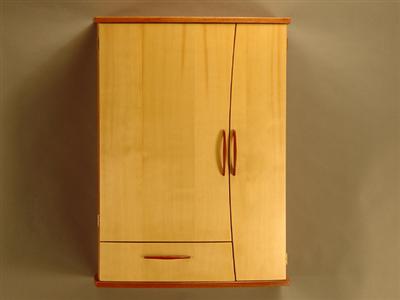
The overall feeling of "Medicine Cabinet" is quite calm and balanced, despite its asymmetry.
Flowing lines and subtle curves combine to create a piece that seems to be in tension, yet very static. The refined, hand-carved rosewood handles give a look of elegance to the whole composition, as does the curving line that separates the doors. This line follows the line of the vertical divider inside, which is a bent lamination made in a vacuum-bag.
|
| |
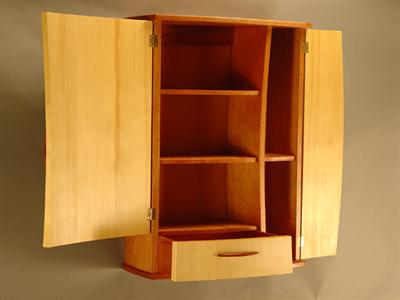
I cut the doors and drawer face out of a coopered panel of book matched quarter-sawn yellow cedar. I first glued up the panel, which had about 2" of curvature across its 21" width. I then built a router jig to help smooth out all the facets and then cleaned it up with hand tools. When the panel was cut square, I then proceeded to cut out the door shapes. I've allowed space for the doors to expand, which I calculated they will. So far, the stability of quarter-sawn yellow cedar has proven to be excellent as the doors have not twisted or warped at all.
The sides of the cabinet are slightly curved as well. These were shaped with hand tools from solid mahogany. The top and bottom have a curve on their front edge that matches that of the doors. The front edges of the cabinet sides (where the hinges are set) are shaped to match the corresponding curve in the doors. The shelves are solid mahogany and are fully housed in the sides and the divider. The cabinet is hung with countersunk screws through the cleat visible in the back of the cabinet at the top. The hinges are solid brass Brusso cabinet hinges mortised by hand. Both the sides and the divider are joined to the top and bottom with glued dowels.
|
| |
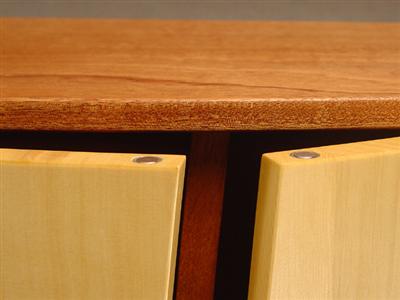
Flush, countersunk magnets in the door tops and underside of the cabinet top provide a tidy way of latching the doors. I offset the magnets by 1/16" to pull the doors in snug, and it worked perfectly. 5 coats of wiping varnish were used to finish the cabinet.
|
| |
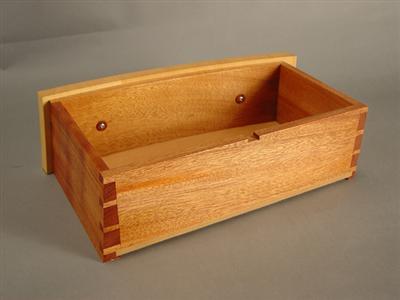
The drawer was built using through dovetails. The side on the left in the photo was shaped to fit against the curved divider inside the cabinet. The yellow cedar face is screwed through slotted holes to allow for wood movement. I made rosewood washers for this. The notch in the back of the drawer is to allow the drawer to be inserted past a spring-loaded wooded drawer stop that I made.
|
| |
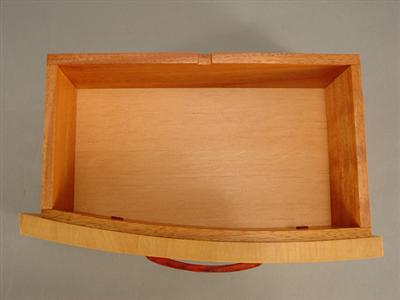
This detail shows part of the curve of the cabinet front. The mahogany front of the drawer was shaped to fit the inside curve of the yellow cedar false-front. One of the rosewood handles is seen in profile, and you can see how the different woods work together. Part of my goal was to try to incorporate more local woods in my work and I feel like I succeeded with "Medicine Cabinet"
|
| |
|
|